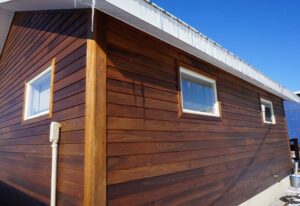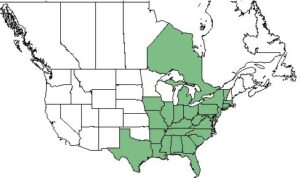by Gaurav Kakkar, kakkarg@vt.edu
Forest products industry is extremely complex by nature. With an aim to develop sustainably, this mature industry have to deal with demanding and wide variety of performance measures. Thus determination of efficiency in such situations is highly difficult. But with the ever growing completion, the companies to need to be efficient in order to compete and survive even with low net profit margins (Sporcic & Landekic, 2014). In such cases where the business work in such complex environment, independent efficiency measures might become isolated approach for business assessment. Rather comparison of performance between firms operating on a similar transformation process might be more useful. This is measure of relative performance (Salehirad & Sowlati, 2006). Relative efficiency is measured by the ratio of relative efficiency of weighted sum of outputs and weighted sum of inputs. The basic requirement for this computation is a set of predefined weights across all units. This becomes a difficulty while obtaining common set of weights. Even after selection of weights the units of parameters become an issue.
Data Envelopment Analysis (DEA) is one of the optimum tool handling such measurement problem. Developed by Charnes et al. (1978), the approach measures relative efficiencies of individual decision making units (DMU) by optimizing weighted output/input ratio. The transformation process is driven by the actions of DMU. While measuring efficiency, it can be multiple peer entities with same transformation process (for eg. Saw mills using similar techniques in the U.S.) or a single entity with different resource utilization over time. DEA is a non-parametric approach, i.e. the inputs, outputs related to the transformation process need not to have the same units of measurement (Triantis, 2012). In other words, for example labor hours, capital investment, overtime, number of machines, board feet of finished lumber, electricity consumption, CO2 emissions, waste generated etc. can be used in their original units while measuring the efficiency of the operation. This removes the need to convert all the inputs and associated outputs measures to a uniform unit. Another feature of DEA technique is weights optimization. Unlike other efficiency measurement techniques like regression analysis, there is no need to assign predefined weights to the parameters of the process. The approach sets up a frontier of efficient DMUs using relative efficiency measures (Triantis, 2012). There are different mathematical models to conduct DEA analysis but CCR (Charnes, Cooper and Rhodes) model (Charnes, Cooper, & Rhodes, 1978) and BCC (Banker, Charnes and Cooper) (Banker , Charnes, & Coooper, 1984) are most frequently used. According to Farrell (1957), technical efficiency represents the ability of a DMU to produce maximum output given a set of inputs and technology (output oriented) or, alternatively, to achieve maximum feasible reductions in input quantities while maintaining its current levels of outputs (input oriented).
DEA is specifically applicable in cases where there are no clear success parameters, and when same efficiency can be achieved using different resources combinations. Thus in such cases, measuring the degree of efficiency individual entities in relation to others acting in the similar conditions with same transformation process might be of more interest. It have been widely applied in different areas for measuring productivity and efficiency. It has also been used for making comparisons between organizations, companies, regions and countries. Application also extends in banking, agriculture, wood industry, management of renewable resources, schooling, etc. for evaluating business performance (Sporcic & Landekic, 2014). The organizations can thus learn from the best performing peers and adapt to move towards the efficiency frontier. The outputs of the analysis, depending upon the method used, also gives the excess of inputs or deficiency in outputs in comparison. That is the measure of technical efficiency. The similar analysis when coupled with the unit cost information can be used to draw allocative efficiency. These efficiency measurements and comparison with the frontiers can be used to develop strategy and benchmark performance goals and objectives.
The following section highlights few examples as possible application of this technique in efficiency measurement of different features of forest products industry.
- Sporcic & Landekic (2014) applied this technique to measure productivity and efficiency of 48 forest management offices in Republic of Croatia. All the offices were managed by Croatian Forests Ltd. and were responsible to manage 80% of the national forest cover. The authors used most commonly used DEA models, CCR and BCC to evaluate relative efficiency. Table 1 lists the inputs and outputs used by the authors.
Table 1 List of Inputs & Outputs used by Sporcic & Landekic (2014)
| Inputs |
Outputs |
| Land, (forest area in thousand hectares) |
Revenues, (yearly income in hundred-thousand croatian kunas) |
| Growing stock, (volume of forest stock in cubic meters per hectare) |
Timber production, (timber harvested in cubic meters per hectare) |
| Expenditures, (money spent in hundred-thousand croatian kunas) |
Investments in infrastructure, (forest roads built in kilometers) |
| Labor, (number of employees in persons) |
Biological renewal of forests, (area of conducted silvicultural and protection works in hectares) |
The results included the global technical efficiency (using CCR model), local pure technical efficiency (using BCC model) and determine scale of the transformation process. The authors also calculated efficiency frontiers, number of efficient units, identify sources and values of inefficiencies and impact of structural characteristics of forest offices (number of employees, growing stocks and surface area) on their overall efficiency. The results showed that 31% of the DMUs were found efficient according to CCR model and 50% using BCC model.
- Upadhyay, Shahi, Leitch, & Pulkki (2012) used DEA in analyzing 24 lumber mills in northwestern Ontario, Canada to measure relative technical efficiency from data over the period of 10 years (1999-2003 and 2004-2008) using the average values for each period. Table 3 lists set the 4 inputs and 1 output used in the study. The authors conducted two set of analysis with and without using energy as an input.
Table 2 List of Inputs & Outputs used by Upadhyay, Shahi, Leitch, & Pulkki (2012)
| Input |
| Materials (Log volume) |
Labor (man-hours) |
| Energy
Hog-fuel
Electricity |
|
| Output |
| Lumber Volume |
The results of DEA show that while some mills (DMUs) improved their performance over the two period with limited resources, others saw a decline in their performance. With considering energy as an input, more mills reported a negative change in the efficiency. One of the probable explaination by the authors for decrease in the efficiency is reduced production in the second period. Those mills failed to adjust their inputs (mainly labor) and were running with more than required resources.
- Runsheng (1998) demonstrated the application of DEA to conduct production efficiency analysis on 65 mills producing unbleached linearboard sector in North America in 1994. Authors used 8 inputs and 1 output (Table 3) to measure the economies of scale, technical efficiency and allocative efficiency. The results showed that most of the analyzed DMUs were technically efficient but only few maintained allocative efficiency. The analysis also showed that most of the mills demonstrated constant returns to scale.
Table 3 List of Inputs & Outputs used by Runsheng (1998)
| Inputs |
| Fiber (BDST/FST) |
Labor
Operating labor (MH/FST)
Salaried (MH/FST) |
| Chemicals (lb/FST) |
Materials (unit/FST) |
| Fuel (MCF/FST) |
Delivery (mile/FST) |
| Power (kWh/FST) |
|
| Outputs |
| Finished short ton production (Annual) |
| BDST= Bone-dry short ton, FST= Finished short ton, MCF=1000 Cubic feet, MH= manhour |
Thorough just these three examples, it’s clear that Data Envelopment Analysis (DEA) is a powerful tool for relative efficiency and performance measurement. Though its application in forest products industry is fairly limited as of now as compared to other industries (Sporcic & Landekic, 2014) but it certainly has the potential to be useful tool for resource management and strategy design for the U.S. Forest Products Industry.
References
- Banker , R., Charnes, A., & Coooper, W. (1984). Some Models for Estimating Technical and Scale Inefficiencies in Data Envelopment Analysis. Management Science, 1078-1092.
- Charnes, A., Cooper, W., & Rhodes, E. (1978). Measuring the Efficiency of Decision Making Units. European Journal of Operational Research, 429-444.
- Farrell, M. (1957). The measurement of productivity efficiency. Jouranl of the Royal Statistical Society, 253-281.
- Runsheng, Y. (1998). DEA: A new methodology for evaluating the performance of forest products producers. Forest Products Journal, 29-34.
- Salehirad, N., & Sowlati, T. (2006). Productivity and efficiency assessment of the wood industry: a review with a focus on Canada. Forest Products Journal .
- Sporcic, M., & Landekic, M. (2014). Nonparametric Model for Business Performance Evaluation in Forestry. In J. Awrejcewicz (Ed.), Computational and Numerical Simulations. InTech. doi:10.5772/57042
- Triantis, K. (2012). Engineering Applications of DEA. In Handbook of Data Envelopment Analysis. Kluwer Publishers.
- Upadhyay, T. P., Shahi, C., Leitch, M., & Pulkki, R. (2012). An application of data envelopment analysis to investigate the efficiency of lumber industry in northwestern Ontario, Canada. Journal of Forestry Research, 657-684.




